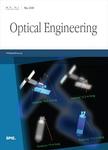版权所有:内蒙古大学图书馆 技术提供:维普资讯• 智图
内蒙古自治区呼和浩特市赛罕区大学西街235号 邮编: 010021

作者机构:Univ Ottawa Sch Informat Technol & Engn Ottawa ON K1N 6N5 Canada
出 版 物:《OPTICAL ENGINEERING》 (光学工程)
年 卷 期:2002年第41卷第2期
页 面:505-517页
核心收录:
学科分类:08[工学] 080401[工学-精密仪器及机械] 0804[工学-仪器科学与技术] 081102[工学-检测技术与自动化装置] 0811[工学-控制科学与工程] 0702[理学-物理学]
基 金:Communications and Information Technology Ontario Mitel Corp National Research Council, NRC Natural Sciences and Engineering Research Council of Canada, NSERC
主 题:image processing color histogram key frames video indexing video segmentation cut detection binary penetration
摘 要:Video information, image processing, and computer vision techniques are developing rapidly because of the availability of acquisition, processing, and editing tools that use current hardware and software systems. However, problems still remain in conveying this video data to the end users. Limiting factors are the resource capabilities in distributed architectures and the features of the users terminals. The efficient use of image processing, video indexing, and analysis techniques can provide users with solutions or alternatives. We see the video stream as a sequence of correlated images containing in its structure temporal events such as camera editing effects and presents a new algorithm for achieving video segmentation, indexing, and key framing tasks. The algorithm is based on color histograms and uses a binary penetration technique. Although much has been done in this area, most work does not adequately consider the optimization of timing performance and processing storage. This is especially the case if the techniques are designed for use in run-time distributed environments. Our main contribution is to blend high performance and storage criteria with the need to achieve effective results. The algorithm exploits the temporal heuristic characteristic of the visual information within a video stream. It takes into consideration the issues of detecting false cuts and missing true cuts due to the movement of the camera, the optical flow of large objects, or both. We provide a discussion, together with results from experiments and from the implementation of our application, to show the merits of the new algorithm as compared to the existing one. (C) 2002 Society of Photo-Optical Instrumentation Engineers.